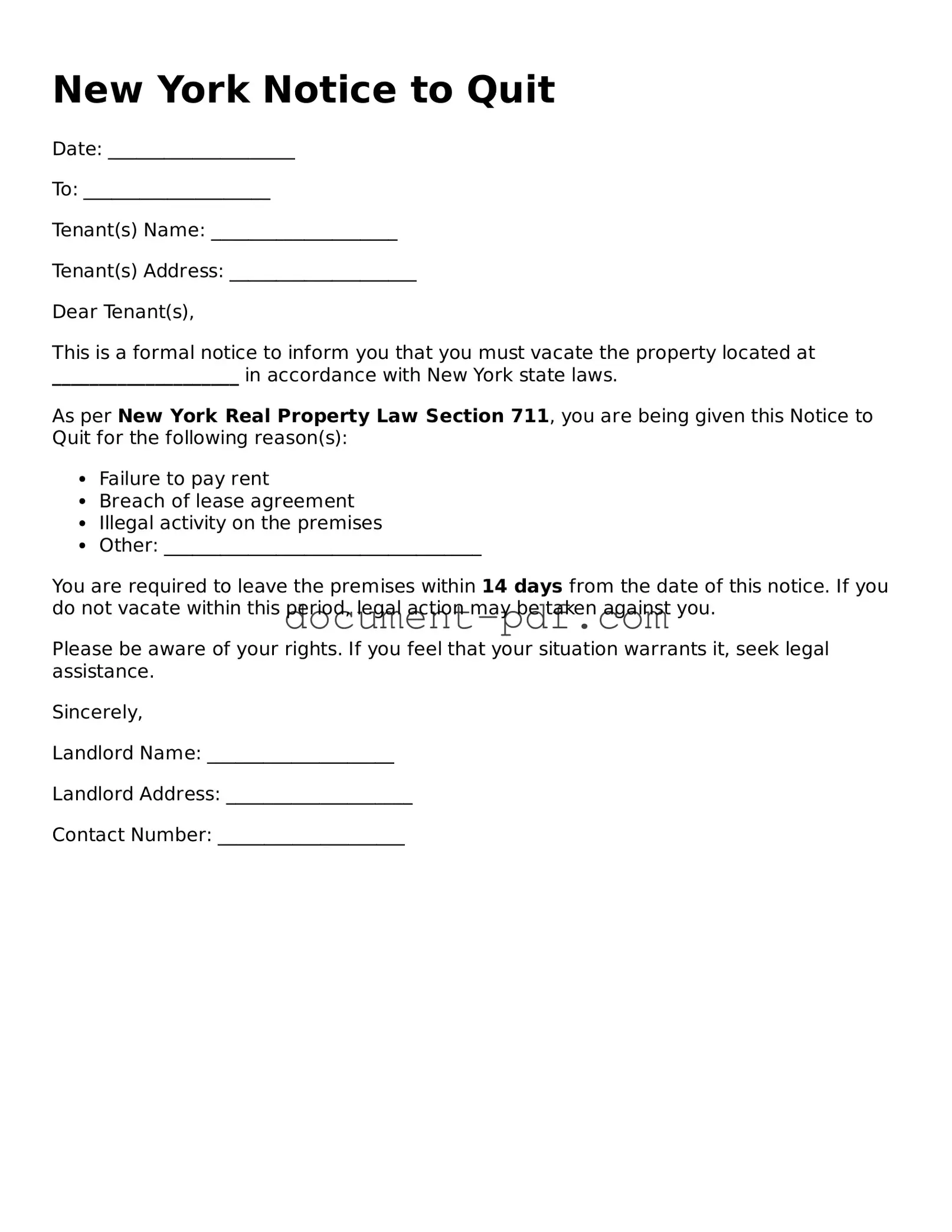The New York Notice to Quit form bears resemblance to the Eviction Notice. Both documents serve as formal notifications to tenants regarding the termination of their lease agreements. An Eviction Notice typically outlines the reasons for eviction, such as non-payment of rent or lease violations, and provides a specified timeframe for the tenant to vacate the premises. The Notice to Quit, while also a precursor to eviction, focuses more on the demand for the tenant to leave the property without delving into specific lease violations.
Another similar document is the Lease Termination Notice. This notice is used by landlords to inform tenants that their lease will not be renewed at the end of its term. Like the Notice to Quit, it communicates the intention to end the tenancy. However, the Lease Termination Notice is generally issued at the conclusion of a lease period, whereas the Notice to Quit can be issued at any time during the tenancy for various reasons, including breaches of lease terms.
The Pay or Quit Notice is also comparable to the New York Notice to Quit. This document is specifically used when a tenant has failed to pay rent. It demands that the tenant either pay the overdue rent or vacate the property within a specified timeframe. While both notices aim to prompt action from the tenant, the Pay or Quit Notice is more focused on the financial aspect of the tenancy, whereas the Notice to Quit can address multiple issues beyond just rent payment.
The Cure or Quit Notice shares similarities with the Notice to Quit as well. This document is issued when a tenant has violated a term of the lease agreement, giving them a chance to remedy the violation or vacate the premises. Like the Notice to Quit, it emphasizes the need for the tenant to take immediate action. However, the Cure or Quit Notice specifically allows for the opportunity to correct the issue, whereas the Notice to Quit may not provide such an option.
For those looking to prepare for the future, understanding the importance of a complete Last Will and Testament is crucial. This legal document assists individuals in specifying their wishes concerning their assets, ensuring that their intentions are honored after their passing.
The 30-Day Notice to Vacate is another document that aligns with the Notice to Quit. This notice is commonly used by landlords to inform tenants that they must vacate the rental property within 30 days. While the Notice to Quit can be issued for various reasons, the 30-Day Notice to Vacate is often used when a landlord simply wants the tenant to leave without specifying a cause. Both documents ultimately serve the purpose of ending a tenancy, but they differ in their specificity and context.
Lastly, the Notice of Default is similar to the Notice to Quit in that it signals a tenant's failure to comply with lease terms. This document is often used in the context of mortgage agreements but can also apply to rental situations. It notifies the tenant of their default status and outlines potential consequences, including eviction. While the Notice to Quit may lead to eviction, the Notice of Default typically serves as an initial warning, allowing tenants an opportunity to rectify their situation before further actions are taken.
